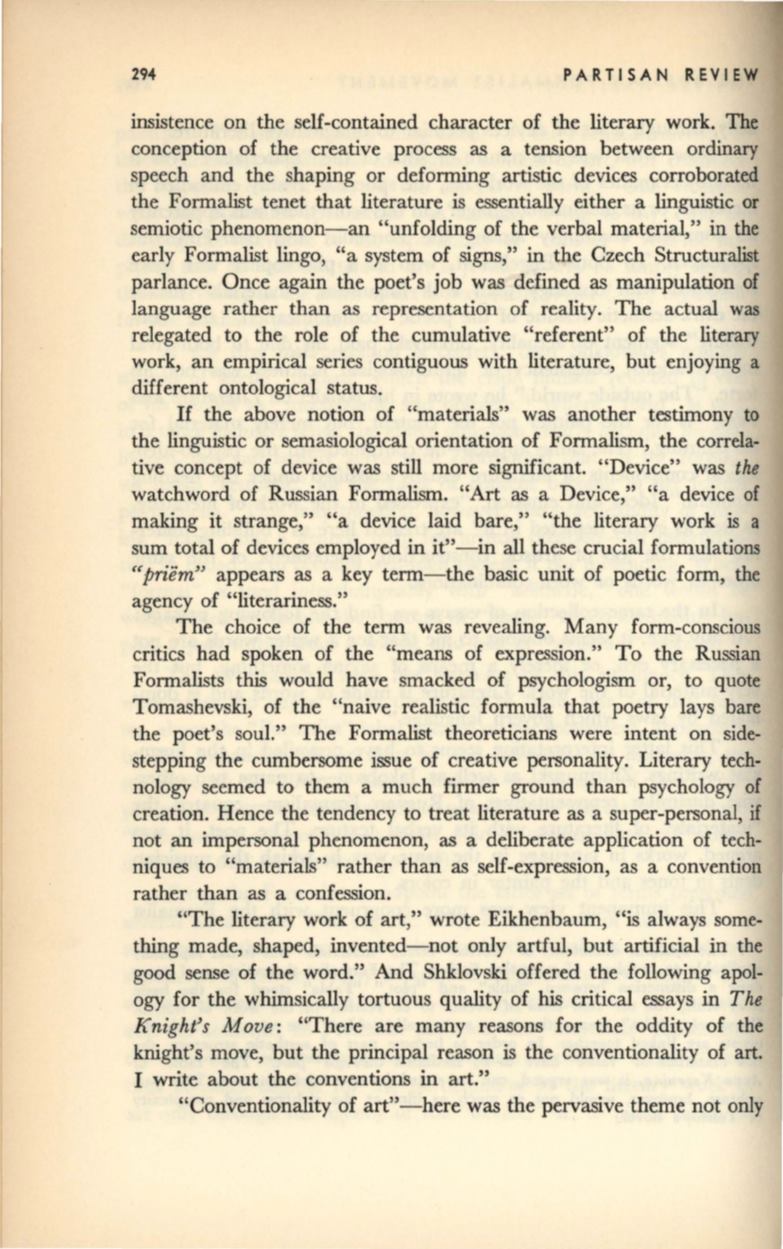
294
PARTISAN REVIEW
insistence on the self-contained character of the literary work.
The
conception of the creative process as a tension between ordinary
speech and the shaping or deforming artistic devices corroborated
the Formalist tenet that literature is essentially either a linguistic or
semiotic phenomenon-an "unfolding of the verbal material," in the
early Formalist lingo, "a system of signs," in the Czech Structuralist
parlance. Once again the poet's job was defined as manipulation of
language rather than as representation of reality. The actual was
relegated to the role of the cumulative "referent" of the literary
work, an empirical series contiguous with literature, but enjoying a
different ontological status.
If
the above notion of "materials" was another testimony to
the linguistic or semasiological orientation of Formalism, the correla–
tive concept of device was still more significant. "Device" was
the
watchword of Russian Formalism. "Art as a Device," "a device of
making it strange," "a device laid bare," "the literary work is a
sum total of devices employed in it"- in all these crucial formulations
((Priem"
appears as a key term- the basic unit of poetic form, the
agency of "literariness."
The choice of the term was revealing. Many form-conscious
critics had spoken of the "means of expression." To the Russian
Formalists this would have smacked of psychologism or, to quote
Tomashevski, of the "naive realistic formula that poetry lays bare
the poet's soul." The Formalist theoreticians were intent on side–
stepping the cumbersome issue of creative personality. Literary tech–
nology seemed to them a much firmer ground than psychology of
creation. Hence the tendency to treat literature as a super-personal, if
not an impersonal phenomenon, as a deliberate application of tech–
niques to "materials" rather than as self-expression, as a convention
rather than as a confession.
"The literary work of art," wrote Eikhenbaum, "is always some–
thing made, shaped, invented-not only artful, but artificial in the
good sense of the word." And Shklovski offered the following apol–
ogy for the whimsically tortuous quality of his critical essays in
The
Knight's Move:
"There are many reasons for the oddity of the
knight's move, but the principal reason is the conventionality of art.
I write about the conventions in art."
"Conventionality of art"-here was the pervasive theme not only


